In January 2020, during a consultation on police reform, Prime Minister Nikol Pashinyan, underscoring the importance of the initiative, noted that this issue has been on his government’s agenda from day one. He added that the main objective of this reform process is to reset relations between citizens and police, especially in light of the new political reality after the Velvet Revolution. Pashinyan stressed that a strategic long-term approach is needed rather than a temporary patch. The Strategy on Armenian Police Reform and Its 2020-2022 Action Plan was then accepted by the Government on April 23.
Diving into its key recommendations, will the new Strategy on Police Reform be successful in creating a “new police?”
Justification for the Strategy
Before discussing the actual content of the Strategy, it is essential to discuss the context in which they were proposed. Like all draft documents, the Strategy includes a Justification section, which outlines the conditions that make the changes necessary. It provides a historical overview of the police force inherited from the USSR and focuses on the lack of sufficient resources as the underlying reason that today’s police often fail to meet the public’s expectations. While a Soviet legacy of top-down enforcement rather than citizen-centric public service, and a post-independence reality of insufficient salaries leaving officers vulnerable to bribery are important considerations, the Justification section should have included specific examples of how the police in Armenia have actually worsened public safety rather than maintained it.
The following are only a few such examples:
-
In the wake of the 2003 presidential election, opposition candidate Stepan Demirchyan led street protests while challenging the official results at the Constitutional Court. On April 12, 2004, a police crackdown on the protesters began with the arrest of opposition leaders at their party headquarters, followed by violent beatings of peaceful protesters by special police units. The operation successfully stifled the movement.
-
In 2004, Grisha Virabyan, an opposition leader, was tortured and severely wounded in an Artashat police station. In 2012, the European Court of Human Rights (ECHR) ruled that Virabyan had been tortured and ordered the Republic of Armenia to reopen the case.
-
After the contested 2008 presidential election, on March 1, 2008, police forcibly dispersed protests in an operation that resulted in 10 deaths.
-
During the 2015 Electric Yerevan protests, water canons and electric tasers were used against peaceful protesters.
-
After a ban on street vendors by then-Mayor of Yerevan Karen Karapetyan, vendors clashed with police on March 3, 2011, leaving several people, including a Member of Parliament, wounded.
-
On July 29, 2016, police fired stun grenades into crowds that had gathered in the Erebuni district of Yerevan, near the site of a police station that had been seized by armed men calling themselves “Sasna Tsrer.” Scores of demonstrators and journalists were injured. Police in uniform and plainclothes officers beat journalists and protesters using wooden clubs and iron bars. Journalists’ equipment were damaged or seized. Police also detained many protesters, including protest leader Andreas Ghukasyan, who was severely beaten. Police were condemned for using excessive force.
-
In July 2017 and January 2018, the Special Investigative Service (SIS) launched a criminal case into reports on torture and other ill-treatment by police officers.
-
During the early days of protests that came to be known as the Velvet Revolution, Reporters Without Borders issued a statement deploring acts of violence against journalists by police and plainclothes officers.
Instead of ensuring public safety, the police in Armenia have a history of being the ones who disrupted the peace. While the Strategy aims to restore the public image of the police, it needs to go beyond mere public relations and address the underlying issues that have allowed police standoffs against their own tax-paying citizens. Such structural changes will inherently result in an improved public image.
The Strategy’s Key Recommendations
1. Structural Model
One of the proposed structural changes is the creation of a Ministry of Internal Affairs. Currently, Article 42 of the Law on Police stipulates that “the Prime Minister oversees the work of the Police.” Adding a layer of insulation through the new ministry is intended to reduce the political exposure of the police hierarchy, although it would retain its centralized leadership model. The draft is not clear enough on how the nomination process for the Head of Police would be changed accordingly.
This aspect of the reform raises two questions:
a) Will state resources required to create this new ministry contradict the Government’s adopted philosophy of streamlining the state apparatus? In other areas, the approach has been to merge ministries, with the most obvious example being the new combined Ministry of Education, Science, Culture and Sport.
b) Within the new ministry, what checks will be put in place to counterbalance the potential for political interference? Armenia previously did have a Ministry of the Interior. However, if the minister can be replaced at the will of the Prime Minister (Armenia does not require ministers to be confirmed by the National Assembly), are they actually empowered to keep public safety front and center as the department’s mission?
2. The Creation of a Patrol Service and Operations Management Center
The strategy proposes creating a Patrol Police Force based on the current traffic police and patrol-guard service. This new body will have traffic patrol and pedestrian subdivisions in each region of Armenia.
The main surprise was that the border patrol function would be transferred to this Patrol Police Force, removing it from the direct purview of the National Security Service (NSS), in alignment with international best practices.
There would be one new unified management center, which will serve as the coordination and regulation nexus for the Patrol Police Force.
3. Preliminary Investigation
In 2014, the function of preliminary investigations of criminal cases was passed from the police to Armenia’s Investigative Committee. Besides the Investigative Committee, other institutions in the governing system also have the right to conduct preliminary investigations. They include the State Revenue Committee (SRC), the NSS and the SIS.
The reform strategy proposes returning the right to conduct preliminary criminal investigations back to the police. The reasoning for this is that the current resources of the police system are completely left out of criminal case procedures. Empowering the police with a detectives’ institute is expected to make better use of state resources for fighting crime. For example, looking into a string of thefts in an urban area may be low priority for the NSS but completely within the capacity of the local police precinct, which is currently excluded from investigating it.
This is a reversal of the current trend where, for the past several years before the Velvet Revolution, the discourse was to establish one investigative body which would work on all criminal cases. After the revolution, on October 3, 2019, the Government accepted the Ministry of Justice’s proposed anti-corruption strategy, according to which numerous investigative bodies would be joined into three bodies investigating criminal cases by 2021: the Investigative Committee, the SIS and a newly-created Corruption Prevention Commission (CPC). Returning preliminary investigation powers back to the police seems to contradict that vision.
Conclusion
It is noteworthy that the Strategy reflects almost all aspects of the work carried out by the police. In this sense, it is a sufficiently well-prepared and extensive document. Of course, the three main recommendations mentioned above are only a piece of the overall reform.
However, there are a few things to keep in mind. First of all, it should be noted that most of the practical steps proposed by the Strategy, including the creation of the Patrol Police, the establishment of the Operational Management Center and the transformation of Police Troops into a National Guard, were being considered by the previous authorities.
In this regard, some questions arise with the Strategy. Is it going to revolutionize a police force, who in the past tortured citizens, was immersed in corruption and voter fraud and who continues to “preserve” itself or will it just be an evolution, that is, simply improve that which exists?
The police force needs revolutionary, radical changes, but the Justification section of the Strategy in particular gives rise to many misgivings. The authors of the Strategy have avoided clearly defining and evaluating the problems that Armenian society has had with the police for decades. Is it possible to treat an illness without an accurate diagnosis?
The main objective in the Strategy is to create a new image of the police. This is worrisome. According to the Law on Police, the function of the police is to prevent and deter crimes. In practice, the focus should have been on increasing the capacity of the police, which would then provide them with the potential to respond more effectively to threats to public safety, protect the public from crime and thus increase respect for the image of the police in society.
On the other hand, in a more philosophical sense, the political goal of the reform should have been to provide such institutional guarantees that the police in the Republic of Armenia would never again be complicit in the overthrow of the constitutional order and electoral fraud. Unfortunately, on this point, the strategy is silent.
also read
Armenia Gets Serious About Reforms: Making Sense Out of Vetting
By Nerses Kopalyan
As an instrument of transitional justice, vetting is designed to “cleanse” state institutions that are tainted by systemic corruption, nepotism, and incompetence. Vetting of personnel is the first step toward the broader goal of institutional reform, writes Dr. Nerses Kopalyan.
Policing Armenia’s Police
By Aramayis Avetisyan
A number of police reforms have been introduced over the last two years. Though changes to date have been fragmented, a new strategy document promises a new approach.
On the Use of the Army in Suppressing Protests in Armenia in March 2008
By Sossi Tatikyan
While Armenia’s second President Robert Kocharyan’s trial continues, Sossi Tatikyan writes about the need to amend relevant provisions of the Constitution to delineate the distinct responsibilities of the army and internal security forces, and to ensure checks and balances when declaring a state of emergency.
From Protecting the Corrupt to Punishing the Corrupt (or It Seems)
By Lusine Sargsyan , Nerses Kopalyan
Can the popularity of the National Security Service be sustained after the dismissal of Artur Vanetsyan? It can, but only through one mechanism: rigid institutionalization and the complete alleviation of the personalization of politics in Armenia.
podcast
Matthew Torigian, Distinguished Fellow of the Munk School of Global Affairs and Public Diplomacy at the University of Toronto and Director of Global Policing Initiatives at the Global Justice Lab speaks with EVN Report's Maria Titizian about his career in law enforcement and politics and forging relationships between Armenia and the Munk School. Torigian is also working on a collaboration with the Zoryan Institute on matters involving human rights and police related seminars.

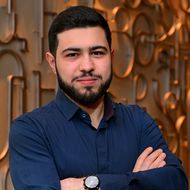
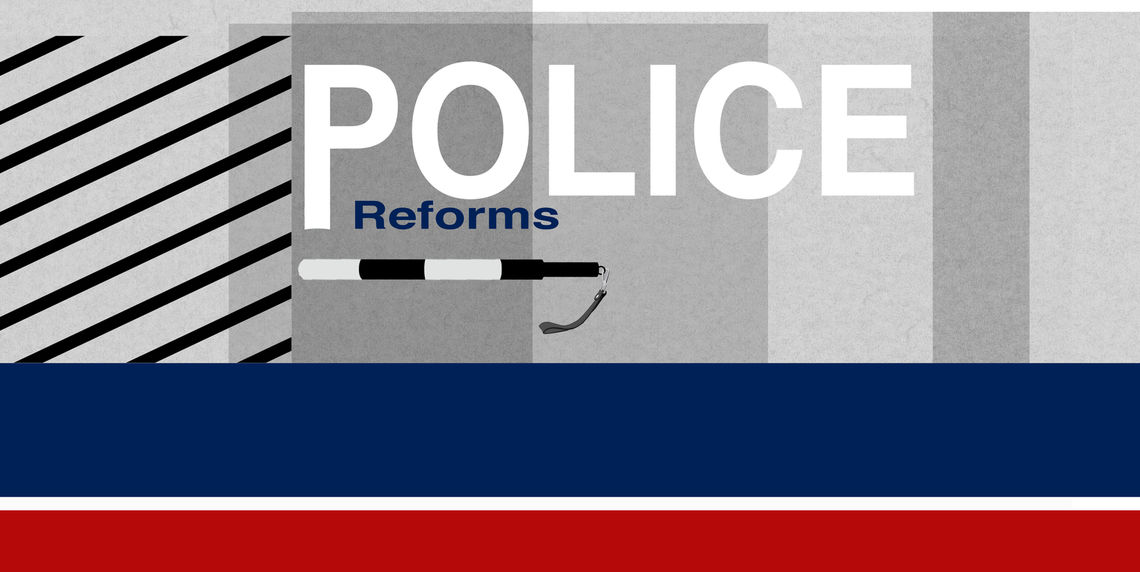
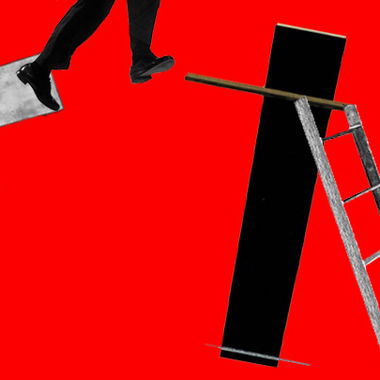
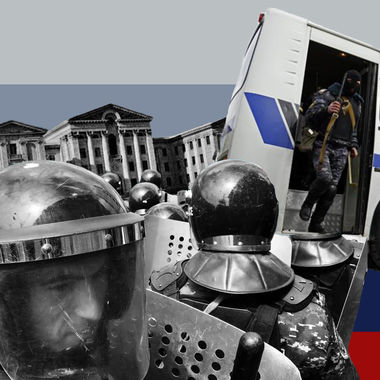
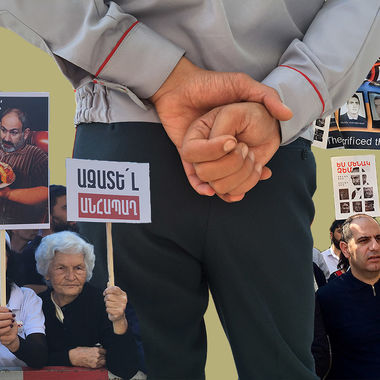
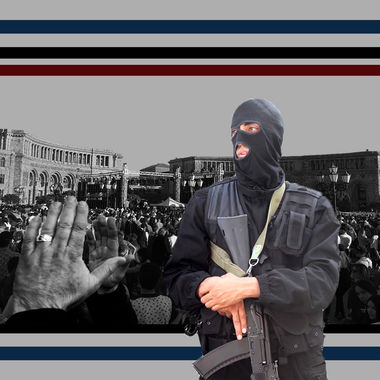



EVN Report welcomes comments that contribute to a healthy discussion and spur an informed debate. All comments will be moderated, thereby any post that includes hate speech, profanity or personal attacks will not be published.